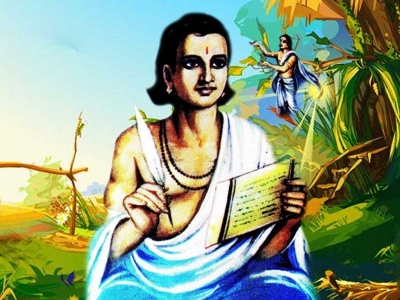
Seven works of Kalidasa are known till date which include three epics, namely: Abhijnanasakuntalam, Malavikagnimitram and Vikramorvasiyam; two epic poems, namely: Raghuvamsa and Kumarasambhava; and two khandakavyas or minor poems, namely Meghadutam and Ritusamhara.
The Raghuvamsha treats of the family to which the great hero Rama belonged, commencing with its earliest antecedents and encapsulating the principal events told in the Raamaayana of Valmiki. But like the Kumarasambhava, the last nine cantos of which are clearly the addition of another poet, the Raghuvamsha ends rather abruptly, suggesting either that it was left unfinished by the poet or that its final portion was lost early.
Kalidasa has been lauded for his literary brilliance from the time of the inception of his works. His works have been a source of inspiration for various writers who have followed. Being written in Sanskrit, his works would have been limited to the upper varnas of society. He is contested to be a Brahmin whose works were centred around men and power. Brahminical hegemony, as a function of land grants made to them, worsened the status of lower varnas due to exploitation at the hands of landowners. The idea which the dominant section of the society wanted to propagate was at the centre of his works. His works tried to manifest the idea of the Gupta age being the “Golden Age”. This itself explains the reason for his works being very popular.
Therefore, this essay establishes that his works were the reflection of his society, written with a male Brahmin’s perspective, limited to a section of society which was in power due to changes in the economic infrastructure, popular because they depicted the mindset of the audience and sounded music to their ears, and remained popular during the course of time among other Sanskrit writers.
Picture Credit : Google

